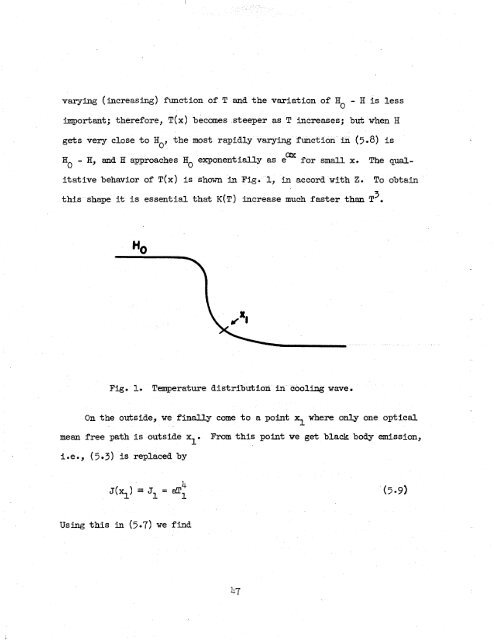Theory of the Fireball
Theory of the Fireball
Theory of the Fireball
You also want an ePaper? Increase the reach of your titles
YUMPU automatically turns print PDFs into web optimized ePapers that Google loves.
varying (increasing) function <strong>of</strong> T and <strong>the</strong> variation <strong>of</strong> H - H is less<br />
0<br />
important; <strong>the</strong>refore, T(x) becomes steeper as T increases; but when H<br />
gets very close to II <strong>the</strong> most rapidly varying function- in (5.8) is<br />
0'<br />
Ho - H, and H approaches Ho exponentially as ea for small X. The qual-<br />
itative behavior <strong>of</strong> T(x) is sham in Fig. 1, in accord with Z. To obtain<br />
this shape it is essential that K(T) increase much faster than T 3 .<br />
*O<br />
Fig. 1. Temperature distribution in' Cooling wave.<br />
On <strong>the</strong> outside, we finally come to a point xlwhere only one optical<br />
mean free path is outside xlo From this point we get black body emission,<br />
4<br />
J(xl) 3 J1 = aTl '<br />
Using this in (5.7) we find<br />
47<br />
(5.9)
















